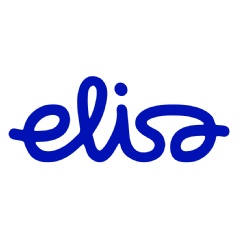Study: Telemonitoring Is the Best Form of Treatment for Warfarin Patients
According to a study, a new, digitalised treatment path:
•delivers better results: The number of thromboembolic events (strokes and haemorrhage) could fall by a half.
•is cost-effective for society: One additional year in a patient’s life span achieved with the new treatment costs less than EUR 10,000.
•would generate savings of up to EUR 20 million
Elisa and Roche commissioned a health economic study that focused on the effects of remote monitoring with patients undergoing anticoagulant treatment, and the associated benefits from the points of view of the patients, the health care service provider and society.
The study shows that telemonitoring managed by patients produces better results and reduces the use of resources in health care. Telemonitoring has been proved a cost-effective way of providing anticoagulation therapy, and most warfarin patients could start using telemonitoring.
Does telemonitoring produce better results than direct anticoagulants?
Traditional treatments are being challenged, and the use of warfarin is being replaced by direct anticoagulants. Based on a budget impact analysis, this causes considerable additional costs that could be avoided if self-management and telemonitoring whose outcome is at least as good were used.
According to the study, society could save up to EUR 20 million per year by using a combination of self-management and telemonitoring. This way the treatment is also very cost-effective, because one additional year in a person’s life span only costs less than EUR 10,000.
The estimated cost-effectiveness of self-management and telemonitoring is probably better than that of direct anticoagulants. For society, new digital therapy options produce better results or save resources – or sometimes they do both.
Minister of Family Affairs and Social Services Annika Saarikko sees digital innovations as an opportunity to develop health care in society.
“Using digitalisation, such as telemonitoring, in health care can contribute to reducing costs and even having better results. Telemonitoring could be used more and more in health care as part of treating and preventing different diseases”, Saarikko says.
New treatment options with digitalisation
Self-management of anticoagulation therapy and telemonitoring are good examples of how digitalisation introduces a new approach to traditional therapy models.
“Elisa has launched advanced digital solutions that enable telemonitoring and self-management at patients’ homes. Our objective is to make new digital therapies clinically effective and have a health economic impact”, says Asko Känsälä, deputy CEO at Elisa.
The study commissioned by Elisa and Roche was produced by Medaffcon and Gaia Consulting. It was conducted in collaboration with health care professionals and patients who use the telemonitoring service.
Elisa is a pioneer in telecommunications and digital services. We serve approximately 2.8 million consumer, corporate and public administration organisation customers, and have over 6.2 million subscriptions in our extensive network. Cooperation with Vodafone and Telenor, among others, enables globally competitive services. Our core markets are Finland and Estonia, and we also provide digital services for international markets. Elisa’s shares are listed on the Nasdaq Helsinki. In 2018, our revenue was EUR 1.83 billion euros, and we employed 4,800 people. As a responsible Finnish market leader, our operations are guided by continuous improvement. Further information on www.elisa.com, Facebook (@elisasuomi) and Twitter (@ElisaOyj).
( Press Release Image: https://photos.webwire.com/prmedia/5/237950/237950-1.png )
WebWireID237950
This news content was configured by WebWire editorial staff. Linking is permitted.
News Release Distribution and Press Release Distribution Services Provided by WebWire.
